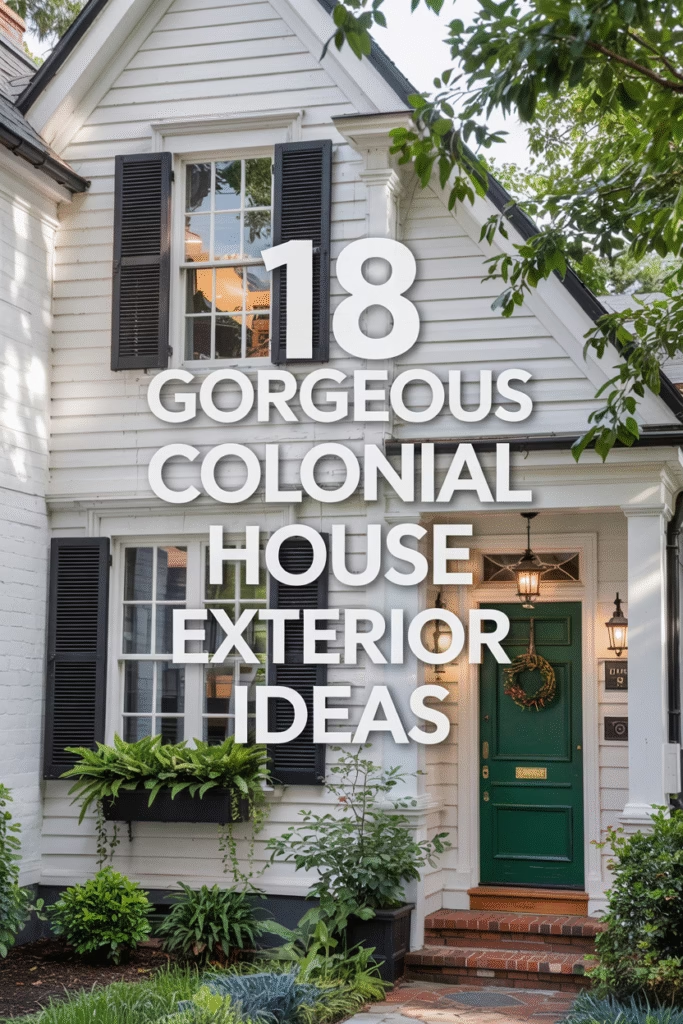The colonial house exterior is a timeless architectural style that evokes history, elegance, and charm. Rooted in the early American settlements of the 17th and 18th centuries, colonial homes are celebrated for their symmetry, simplicity, and classic detailing. Whether you’re restoring a historic property or updating a modern home to reflect this enduring aesthetic, there are countless ways to reimagine the colonial house exterior. From traditional designs to modern twists, this article explores 18 unique and human-crafted ideas to inspire your next exterior transformation. Each idea is a distinct variation of the colonial style, ensuring your home stands out while staying true to its historical roots.
Key Facts About Colonial House Exteriors
- Origins: Colonial architecture draws from European influences, particularly British, Dutch, and French styles, adapted to the American landscape during the 1600s and 1700s.
- Characteristics: Symmetrical facades, evenly spaced windows, gabled roofs, and classic materials like brick or wood siding define the colonial house exterior.
- Modern Appeal: Colonial designs remain popular for their versatility, blending seamlessly with both traditional and contemporary elements.
- Regional Variations: Styles like Georgian, Federal, and Dutch Colonial offer unique takes on the colonial aesthetic, influencing exterior choices.
18 Colonial House Exterior Ideas
1. Classic Red Brick Georgian Facade
The Georgian-style colonial house exterior is the epitome of elegance, with its red brick facade and white trim. Use high-quality, hand-molded bricks for authenticity, laid in a Flemish bond pattern. Accentuate the entrance with a pedimented doorway featuring pilasters and a decorative crown. Multi-pane sash windows with black shutters add symmetry, while a steeply pitched gable roof completes the stately look. This timeless design exudes formality and historical grandeur, perfect for traditionalists.
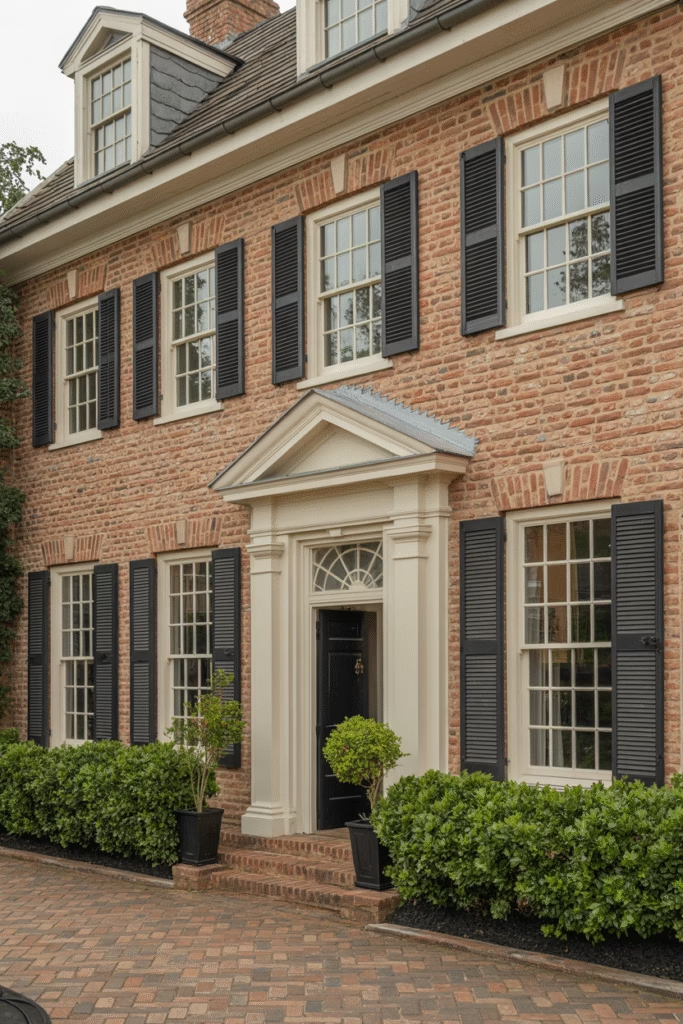
2. White Clapboard with Black Shutters
For a quintessential New England colonial house exterior, opt for white clapboard siding paired with black shutters. The crisp contrast highlights the home’s clean lines and balanced proportions. Install double-hung windows with small panes and a central chimney for authenticity. A simple yet bold red front door adds a pop of color, while a gambrel roof enhances the classic charm. This look is ideal for coastal or suburban settings.
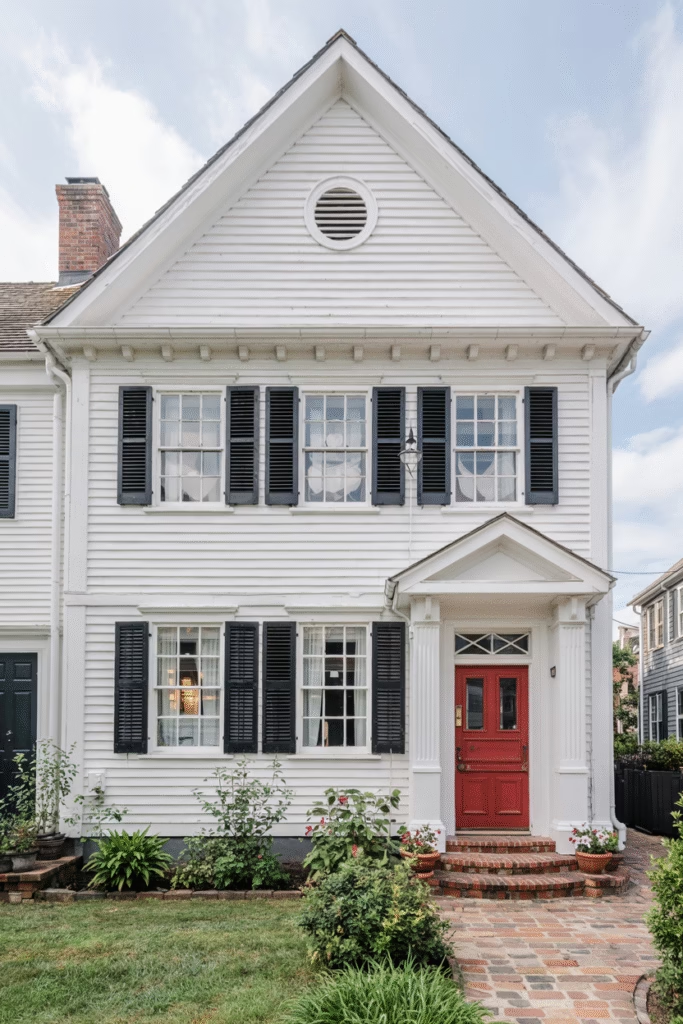
3. Dutch Colonial Gambrel Roof Design
Dutch Colonial homes are known for their distinctive gambrel roofs, which create a barn-like silhouette. Clad the exterior in weathered cedar shingles for a rustic yet refined appearance. Incorporate flared eaves and dormer windows to maximize space and light. A pastel-colored front door, such as soft blue or sage green, adds a modern twist while maintaining historical integrity. This style suits homeowners seeking a blend of charm and functionality.
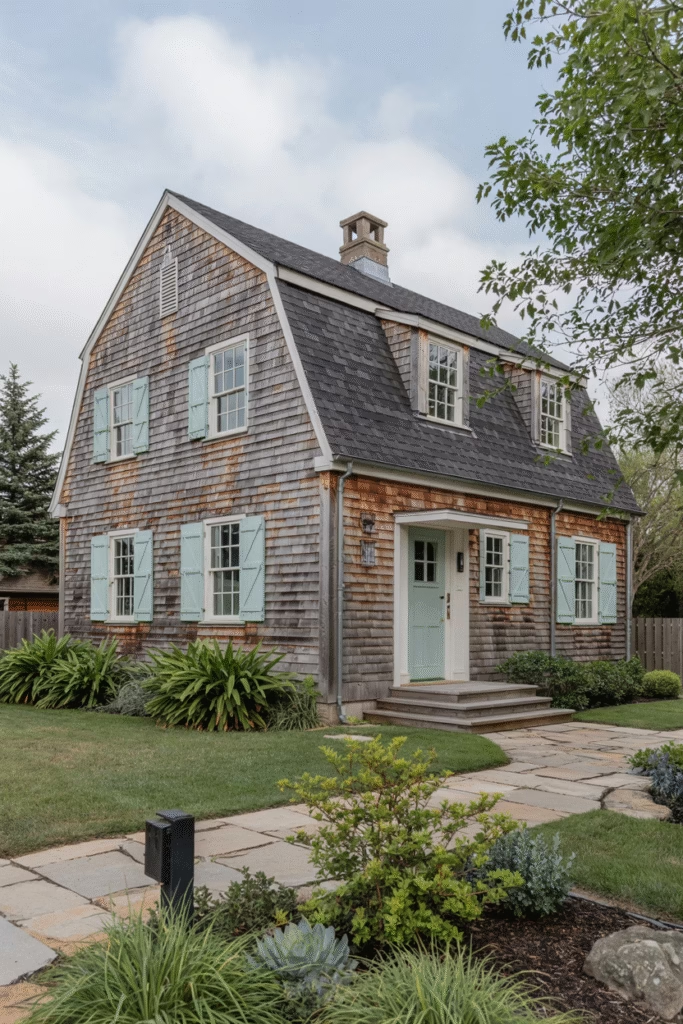
4. Federal-Style Symmetry with Palladian Windows
Inspired by neoclassical architecture, a Federal-style colonial house exterior emphasizes refined symmetry. Use smooth brick or stucco painted in soft ivory or pale gray. Install a Palladian window above the entrance for a dramatic focal point, complemented by a fanlight transom. Delicate moldings and slender columns frame the doorway, while evenly spaced shutters in navy or charcoal enhance the elegance. This sophisticated design appeals to those who love understated luxury.
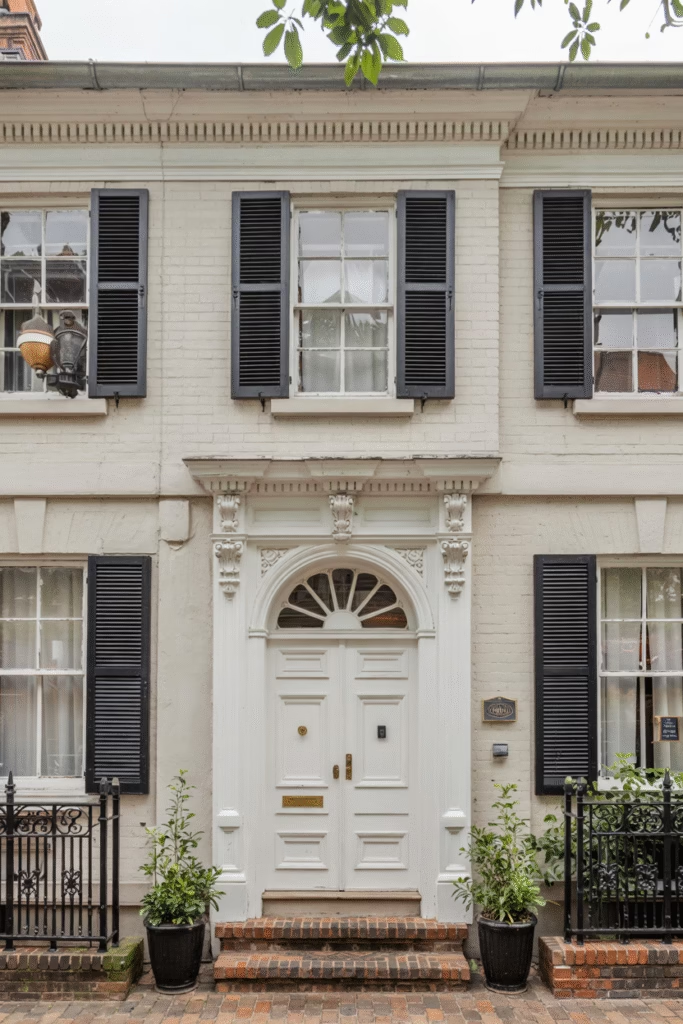
5. Stone-Clad Colonial with Rustic Appeal
For a rugged yet elegant colonial house exterior, cover the facade in locally sourced stone, such as fieldstone or limestone. The textured surface adds warmth and character, while white-painted trim keeps the look polished. Incorporate arched windows and a heavy wooden front door with wrought-iron hardware for a touch of old-world charm. A slate roof ties the design together, making it ideal for rural or mountainous settings.
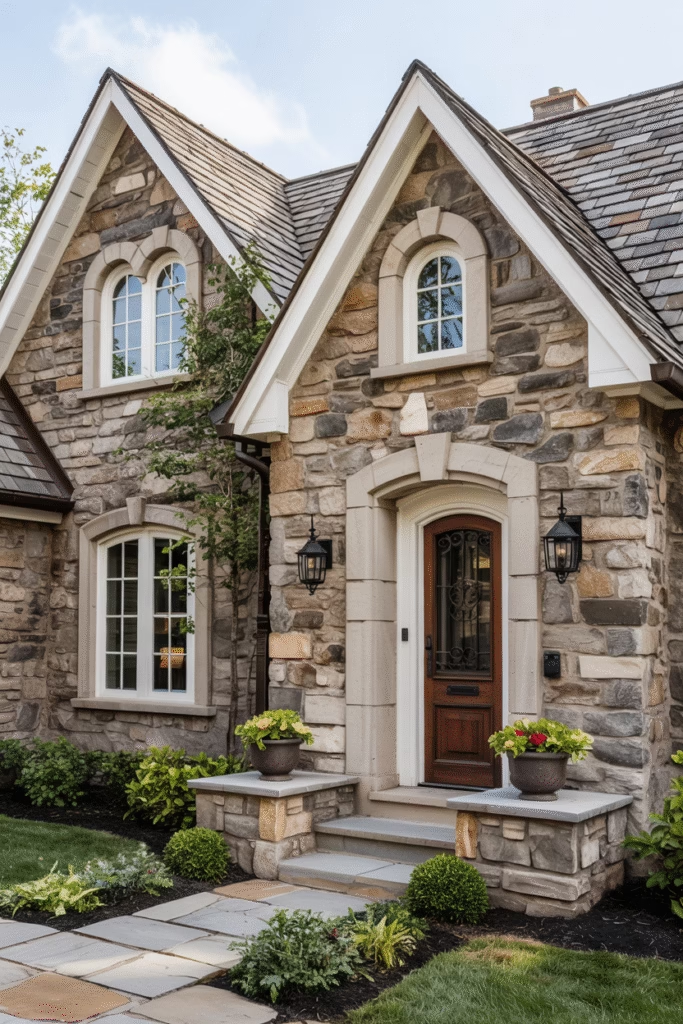
6. Painted Brick in Soft Pastels
Modernize the colonial house exterior by painting the brick facade in a soft pastel shade, such as blush pink, pale blue, or mint green. This unexpected color choice breathes new life into the traditional style while preserving its symmetry. Pair with white shutters and a black front door for contrast. Add a decorative crown molding above the entrance to maintain historical detailing. This approach is perfect for homeowners wanting a fresh, contemporary twist.
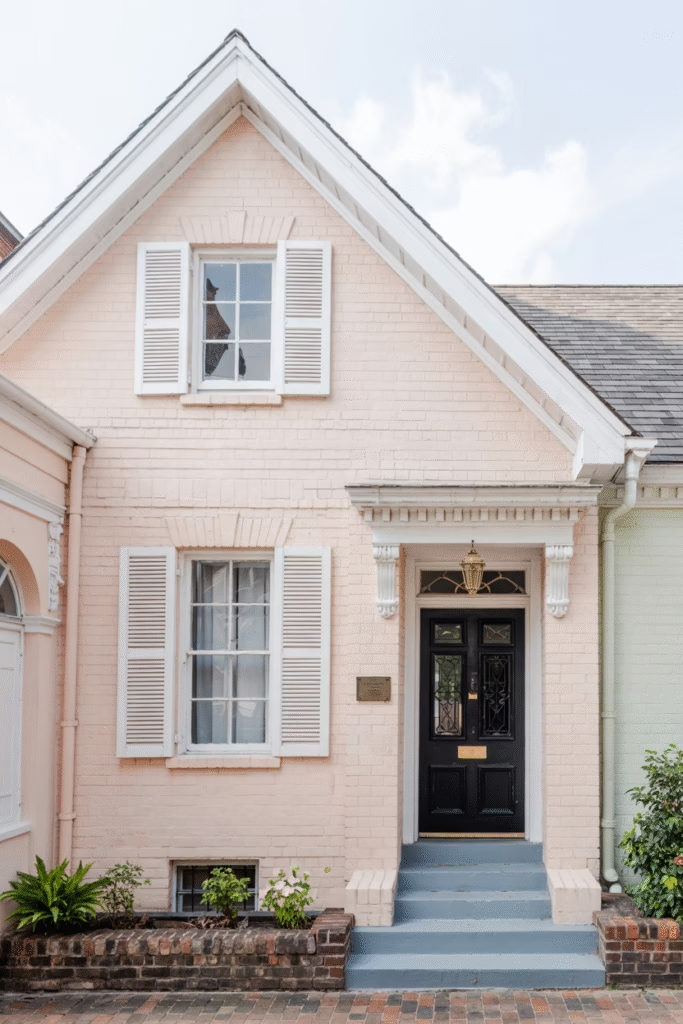
7. Colonial Revival with Wraparound Porch
Revive the colonial aesthetic with a spacious wraparound porch, a hallmark of Colonial Revival homes. Use white wood siding and columns to create a bright, inviting exterior. Install large, multi-pane windows to flood the interior with light, and add green or navy shutters for contrast. A metal roof in a muted tone, like charcoal or bronze, adds durability and modern flair. This design is ideal for creating a welcoming, family-friendly vibe.
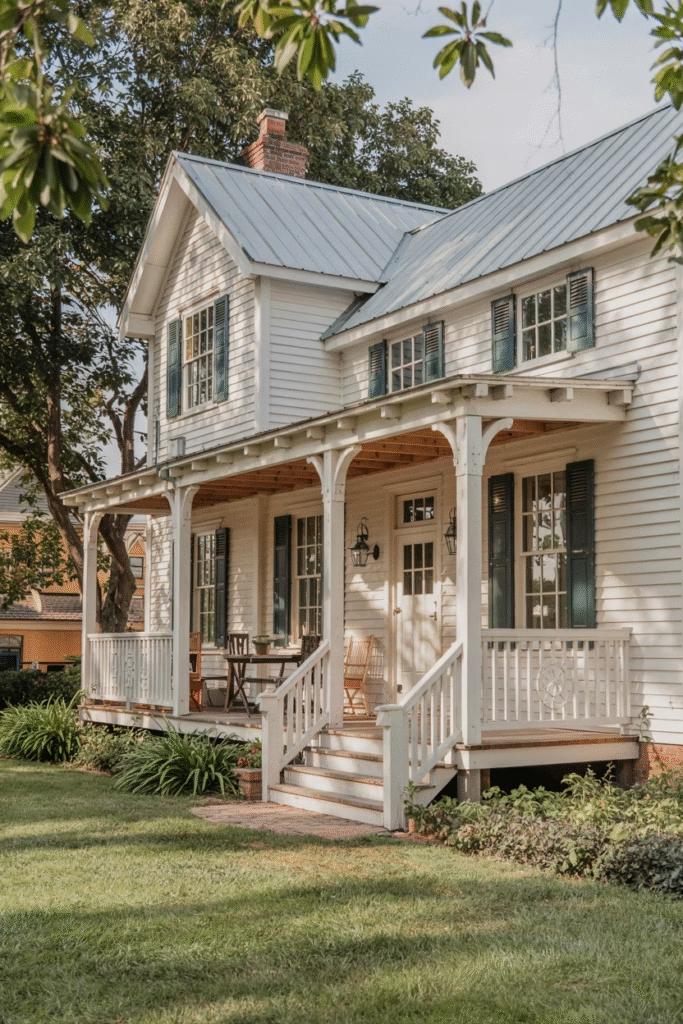
8. French Colonial with Stucco and Balconies
Inspired by French settlements in the South, this colonial house exterior features smooth stucco walls painted in warm tones like cream or taupe. Incorporate wrought-iron balconies and French doors to evoke a New Orleans-inspired charm. Symmetrical windows with louvered shutters and a low-pitched hip roof complete the look. This style is perfect for warm climates and adds a touch of romantic elegance.
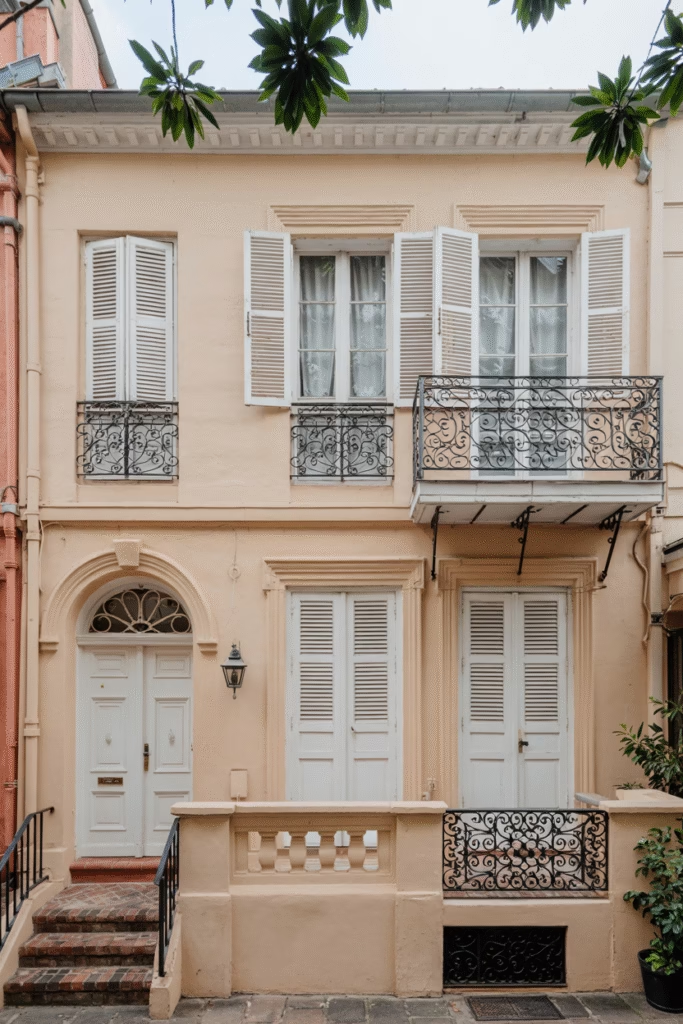
9. Monochromatic Gray Elegance
For a sleek, modern colonial house exterior, paint the entire facade—brick or siding—in a single shade of gray, from soft dove to deep charcoal. Use matching gray shutters and trim for a cohesive, minimalist look. Highlight the entrance with a bold black door and polished brass hardware. A steeply pitched roof with dark shingles adds drama, making this design ideal for urban settings or modern interpretations of colonial style.
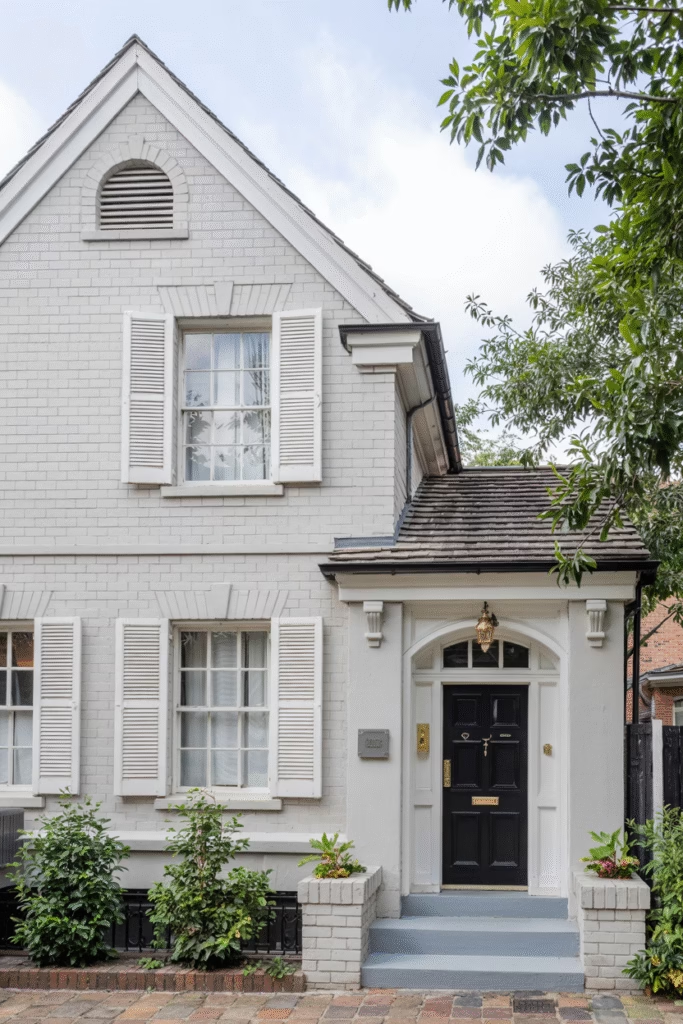
10. Weathered Wood Shingle Colonial
Embrace a coastal colonial house exterior with weathered wood shingles left unpainted to develop a natural, silvery patina. Pair with crisp white trim and a bright red or navy front door for contrast. Incorporate dormer windows and a central chimney for historical accuracy. This low-maintenance, organic look is perfect for beachside or rural homes, offering a timeless, weathered charm.
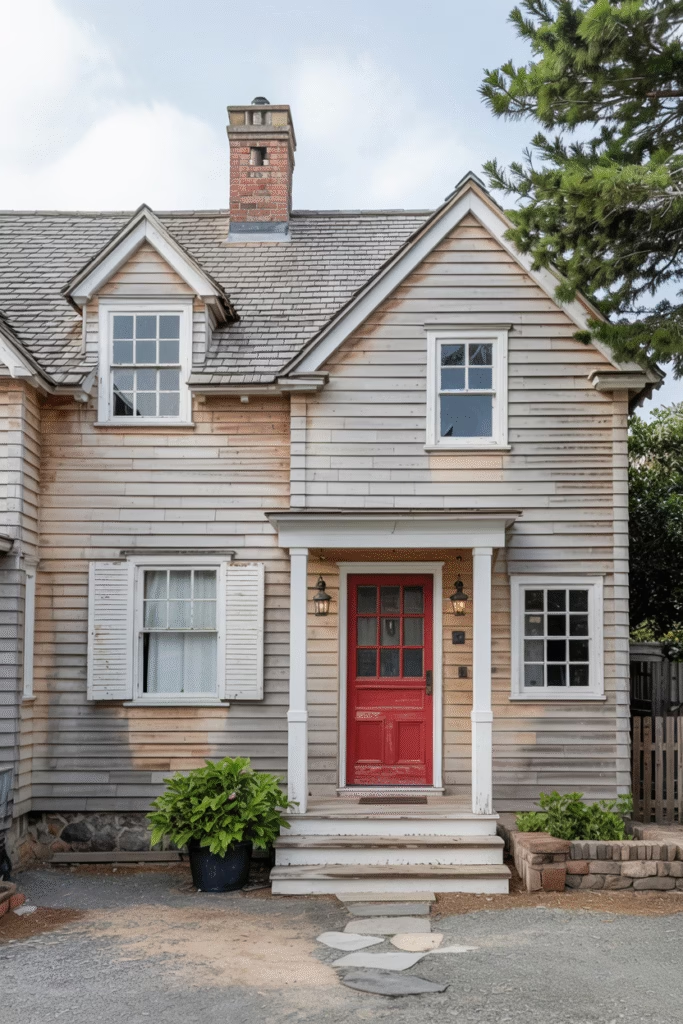
11. Colonial with Bold Color Accents
Add personality to a colonial house exterior by incorporating bold color accents. Start with a neutral base, such as white or beige clapboard, and paint the shutters and front door in vibrant hues like mustard yellow, emerald green, or coral. Symmetrical window placement and a pedimented entrance maintain the colonial aesthetic, while the colors inject modern energy. This approach suits homeowners who want a playful yet classic look.
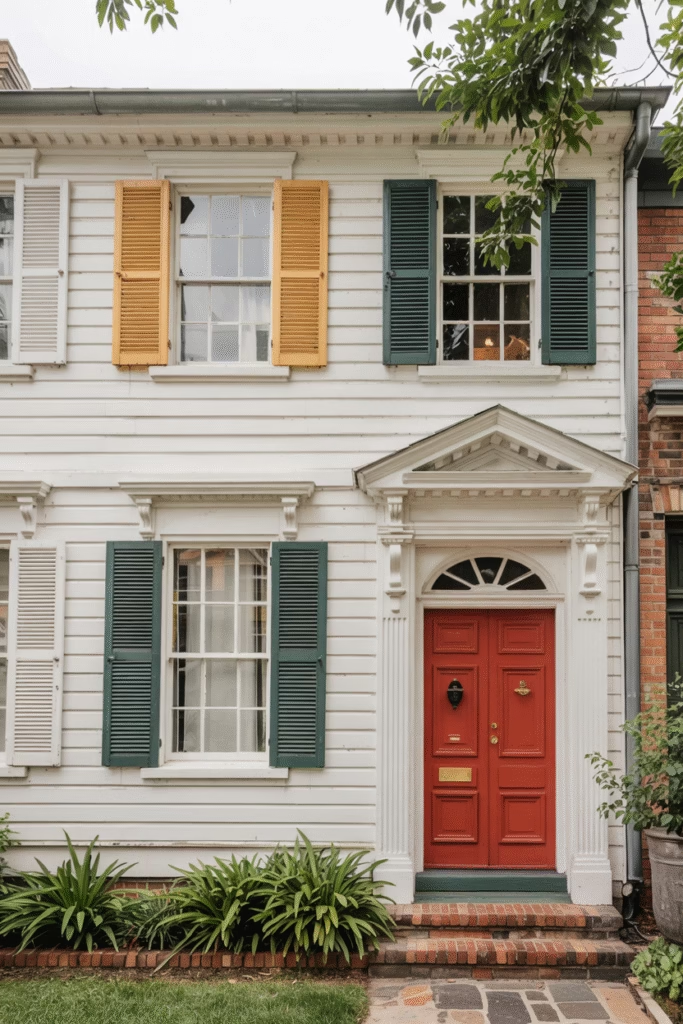
12. Brick and Siding Combination
Combine materials for a dynamic colonial house exterior by using red brick on the lower half and white clapboard on the upper half. This creates visual interest while maintaining symmetry. Add black or dark green shutters and a bold front door in a contrasting color, such as deep blue. A gabled roof with dormers enhances the traditional appeal, making this design versatile for various settings.
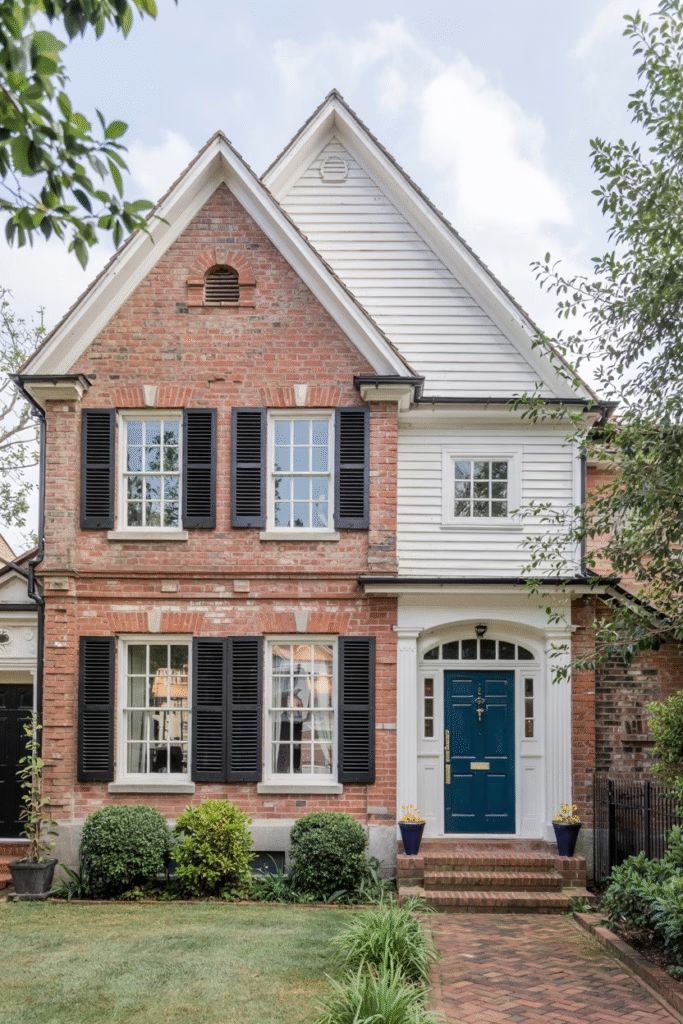
13. Colonial with Arched Portico
Elevate the entrance of your colonial house exterior with an arched portico supported by slender columns. Use brick or stucco for the facade, painted in a soft neutral like ivory or taupe. Incorporate multi-pane windows with black shutters and a fanlight above the door for elegance. A slate or metal roof adds durability and sophistication, perfect for homeowners seeking a grand, welcoming entryway.
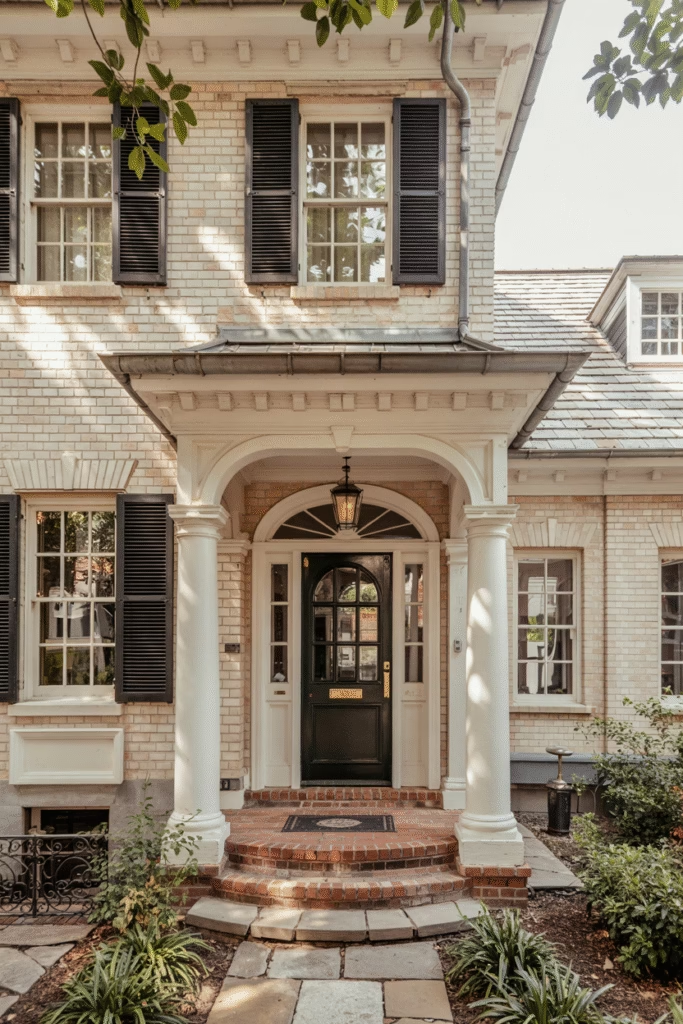
14. Southern Colonial with Grand Columns
Channel the grandeur of Southern plantations with a colonial house exterior featuring tall, white columns supporting a wide front porch. Use white clapboard or brick for the facade, paired with black shutters and a bold red door. Symmetrical windows and a hipped roof enhance the stately appearance. This design is ideal for large properties and exudes timeless Southern charm.
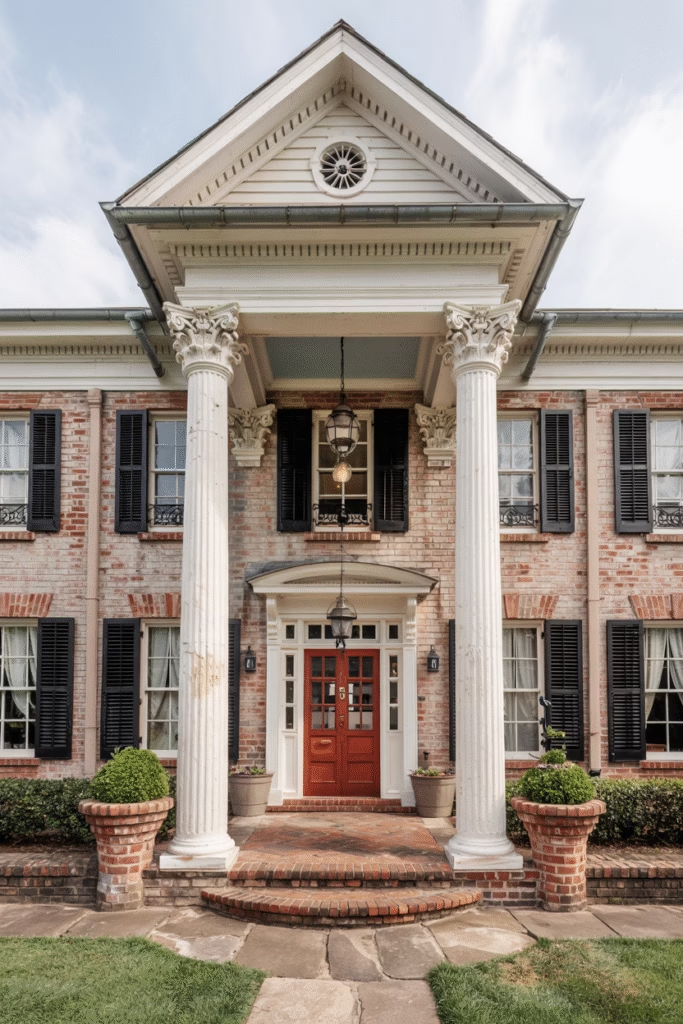
15. Modern Colonial with Minimalist Detailing
For a contemporary take on the colonial house exterior, use clean lines and minimalist detailing. Opt for smooth stucco or painted brick in a neutral tone like white or light gray. Eliminate shutters for a streamlined look, and install large, unadorned windows for a modern feel. A flat or low-pitched roof and a simple, unembellished entrance complete this sleek design, perfect for urban or suburban homes.
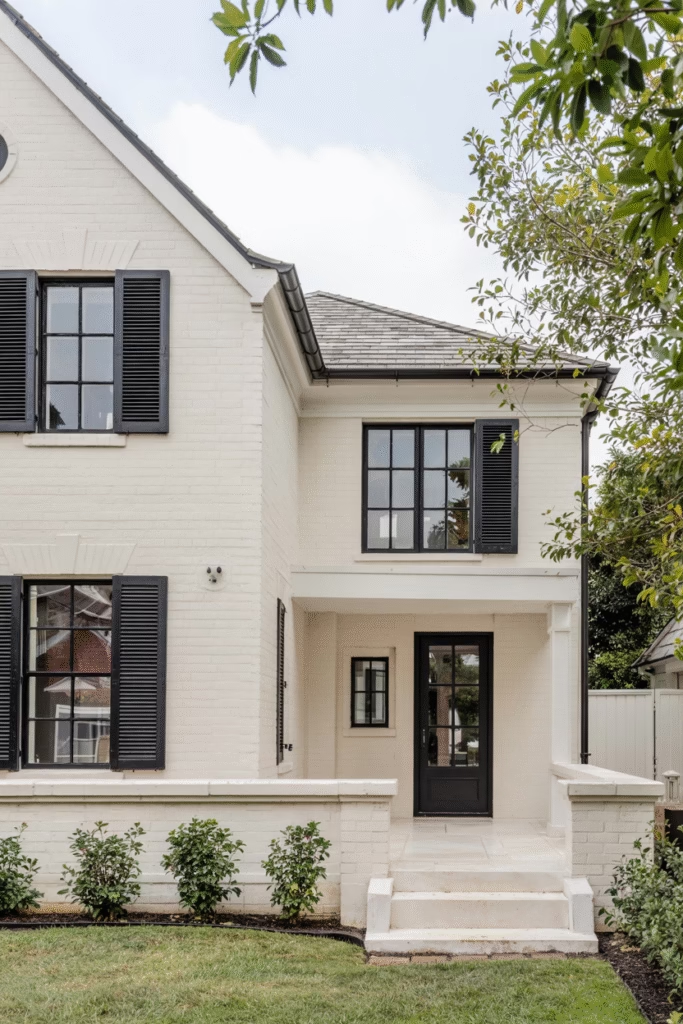
16. Colonial with Mixed Textures
Create a tactile colonial house exterior by mixing textures, such as brick, wood siding, and stone accents. Use brick for the main facade, wood siding for gables, and stone around the entrance for visual depth. Pair with white trim and dark shutters for contrast. A steeply pitched roof with dormers adds traditional charm, making this design ideal for those who love architectural variety.
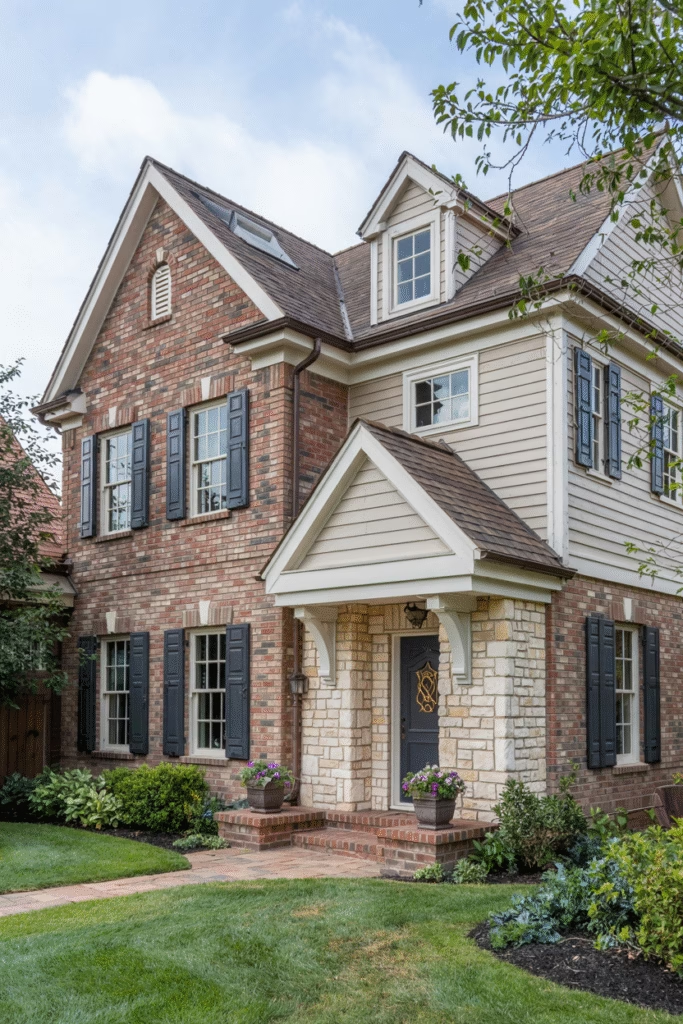
17. Coastal Colonial with Blue Accents
For a beach-inspired colonial house exterior, use white or light gray clapboard with soft blue shutters and a matching front door. Incorporate nautical elements like rope detailing or lantern-style lighting. A gambrel or gabled roof with dormers enhances the coastal vibe, while multi-pane windows maintain colonial symmetry. This look is perfect for seaside properties or homes aiming for a relaxed, breezy aesthetic.
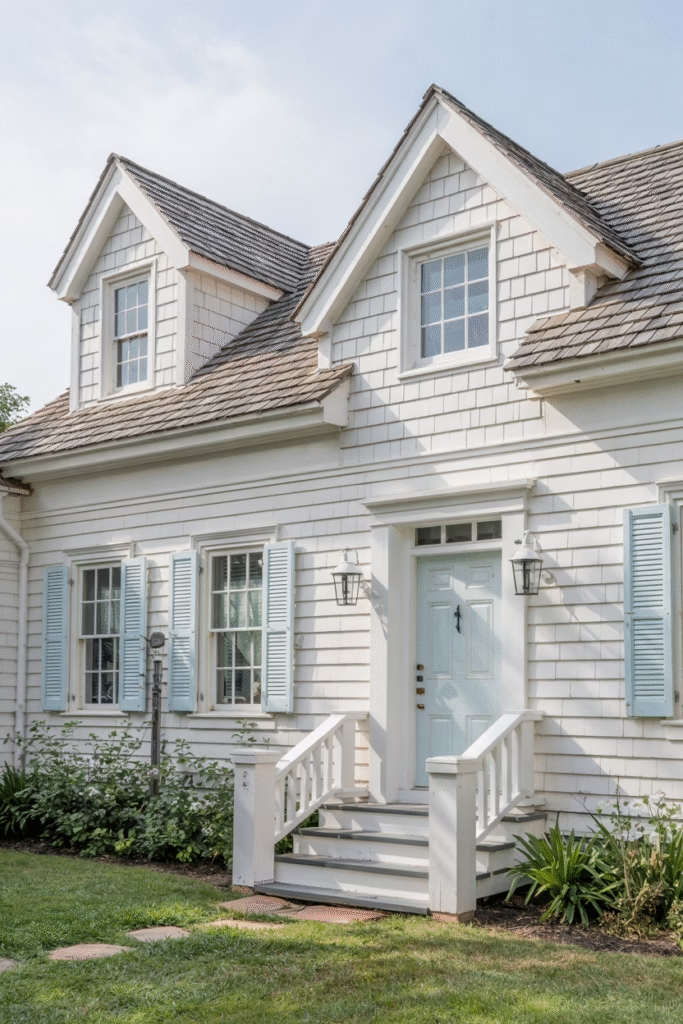
18. Colonial with Copper Accents
Add a touch of luxury to your colonial house exterior with copper accents, such as gutters, downspouts, or a cupola. Use red brick or white siding for the facade, paired with black shutters and a classic front door. The copper elements develop a natural patina over time, adding character and sophistication. A slate roof complements the design, making it ideal for homeowners seeking a high-end, timeless look.
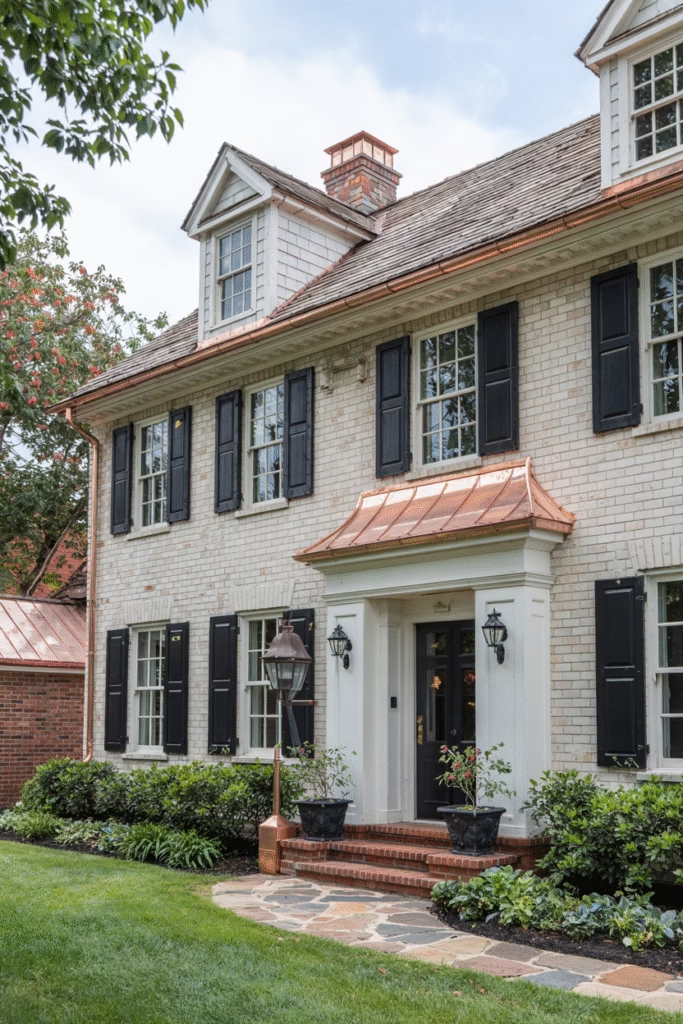
FAQs About Colonial House Exteriors
Q: What defines a colonial house exterior?
A: A colonial house exterior is characterized by symmetry, evenly spaced windows, gabled or gambrel roofs, and classic materials like brick, clapboard, or stone. Features like shutters, pedimented doorways, and central chimneys are also common.
Q: Can I modernize a colonial house exterior without losing its charm?
A: Yes, you can modernize a colonial exterior by using bold colors, minimalist detailing, or contemporary materials like metal roofing while preserving symmetry and traditional elements like multi-pane windows.
Q: What are the best materials for a colonial house exterior?
A: Traditional materials include brick, wood clapboard, cedar shingles, and stone. Modern updates might incorporate stucco, metal accents, or painted brick for a fresh look.
Q: How do I choose a color scheme for my colonial house exterior?
A: Stick to classic colors like white, red, or gray for authenticity, or experiment with pastels or bold accents for a modern twist. Ensure the palette complements the home’s architectural style and surroundings.
Q: Are colonial house exteriors high-maintenance?
A: Maintenance depends on the materials used. Brick and stone are low-maintenance, while wood siding or shingles may require regular painting or sealing to prevent weathering.
Conclusion
The colonial house exterior is a canvas for creativity, blending historical elegance with modern versatility. Whether you prefer the timeless appeal of red brick Georgian facades, the coastal charm of weathered shingles, or the bold accents of a modernized design, these 18 ideas offer endless inspiration. By carefully selecting materials, colors, and architectural details, you can craft a colonial exterior that reflects your personal style while honoring its rich heritage. Transform your home into a masterpiece that stands the test of time, captivating onlookers with its enduring beauty.

Haris Virk is the creative force and expert content strategist behind ScrapSafari.com. As an accomplished writer and designer, Haris leads the development of innovative content and visually stunning images that captivate audiences. His extensive experience in crafting engaging articles and unique design ideas makes him a pivotal contributor to ScrapSafari’s success.
Haris’s keen eye for aesthetics and trend forecasting ensures that every piece he produces not only informs but also inspires readers. His proficiency extends to mastering Pinterest strategies, where his thoughtfully crafted pins drive significant traffic and amplify the site’s reach.
With a passion for creativity and a deep understanding of content dynamics, Haris Virk brings a distinctive blend of originality and strategic thinking to the ScrapSafari team, solidifying its place as a go-to source for design, ideas, and inspiration.
